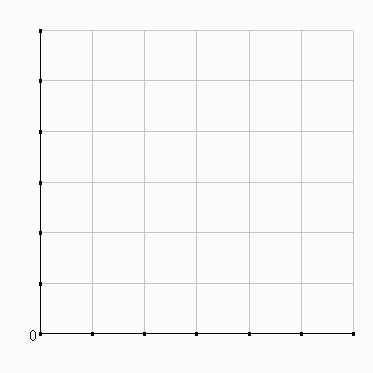 |
 |
IV. The perfectly competitive (PC) market
Recall: firm must do 2 things to max profit:
1. Minimize cost of whatever amount is produced
--we've just finished looking at this
2. Decide how much to produce
--we turn to that now
Deciding how much to produce brings consumers and
producers together in the market
Consumers: part II: the demand side of the
market
Producers: part III: the supply side of the
market
We consider this interaction now in the context of a perfectly competitive market
Assumptions and basic concepts
(1) identical (homogeneous) products for all producers:
restricts all competition to a single dimension--price
(2) many "small" sellers--each one too small to influence price of output (zero measure)
=> firms are "price takers"
regardless of industry demand, firm's D is horiz.
(3) easy entry and exit
=> LR profits = 0
(4) perfect information
rules out miscalculations
Relevance of PC--why study such an extreme case?
(1) about 1/2 of economy is PC
(2) provides a benchmark, a standard of comparison when looking at what goes wrong with markets
(3) helps us understand firm behavior
--competitive pressures
--collusion
--rent-seeking, etc.
A. Equilibrium in the short run
1. Choosing output
Recall: firms try to maximize profits: TR - TC
We've been looking at costs for some time now.
For now, note just that TC =
TC(Q)
MC = DTC/DQ
TR is also a function of Q
For each PC firm => TR = P.Q, with P a constant = the going market price
Marginal revenue (MR): the change in TR associated with the sale of an extra unit of output:
MR = DTR/DQ
For a PC firm, MR = P
Anytime a PC firm sells another unit, TR rises by P
Using marginal analysis to maximize profit
Recall goal: max TR-TC.
Note: selling extra output raises profits if and only if TR rises by
more than TC:
DTR > DTC => Dp > 0
MR > MC => Dp > 0
=> produce more
Stop when MR<=MC.
That will maximize your profits, with one possible exception:
If p<0, check
shutdown condition.
Overall: 2-step process to choosing profit-maximizing output:
Step 1: Expand production as long as MR >= MC (the upward-sloping
portion of MC).
Step 2: If profits are < 0, check to be sure that TR >= TVC
(=> P >= AVC). If not, shut down.
Review worksheet on profit maximization.
The shutdown option:
Q=0 => TR = 0, TC = TFC, p = -TFC
=> better to operate at Q* if
p > -TFC =>
TR - TC > -TFC =>
TR > TC - TFC =>
TR > TVC =>
TR/Q* > TVC/Q* =>
P > AVC at Q*
Note: there are only 4 possible situations at MR=MC:
(1) P>ATC => positive economic profits => operate at P=MC
(2) P=ATC => breakeven situation => operate at P=MC
(3) P<ATC, but >=AVC => operate at P=MC for now since you're
covering TVC and part of TFC (ex: dot.com firms)
(4) P<AVC => shut down => losses = TFC; you're making your
situation worse by operating since TR doesn't even cover TVC. Exit unless you expect
things to improve.
Rule: if you choose to be an industry, as long as P>minAVC, operate where P=MC for maximum profits
Industry supply in the short run:
 |
 |
Industry supply (S) =horizontal summation of
individual firms' supply curves (MC curves above minAVC).
That's why we say that marginal costs underlie supply curves.
2. Calculating and illustrating profits
p = TR - TC
= P.Q* - ATC.Q*
= (P - ATC)Q*
= a rectangle:
base = Q*
height=P-ATC at Q*
See profits geometry worksheet
B. equilibrium in the long run
Guest lecturer on steel industry cycle at a steel
conference:
Profits > 0 => entry until
profits = 0 again
Profits < 0 =>exit until profits = 0 again
Example: coffee after WWII
1. D1: 1945: equilibrium w/ European market closed off since 1941 (40%
of market)
2. D2: 1950: Brazil out of stocks demand stable after (eI =
0)
3. S2: 1955-1970s: 4-5 years to get first crop, yields rise 'til tree
is 10-15 years old =>
overplanting (e = 0.3 => foreign exchange
falls)
4. S3: 1970s: Brazilian frost brought market into line
 |
 |
| Industry | Firm |
Key simplification here: ATC remained the same as
industry output changed.
Not always true.
Effects of entry
due to profits>0 (the reasoning works in reverse for exit):
(1) P falls: always true
(2) ATC curves shift if industry size afftecs input prices.
(No single firm affects input prices. But all firms
together might)
Possible impact of entry on unit costs--3 possibilities:
| ATC... | Industry label | Example | |
| 1. | Stays the same | Constant cost industry | Haircuts |
| 2. | Rises | Increasing cost industry | Farming |
| 3. | Falls | Deceasing cost industry | Consumer electronics |
 |
|
Why does this matter? It determines whether industry prices remain stable, rise or fall as industry size changes over time
Example of an increasing cost industry:
 |
 |
| Industry | Firm |
1: D shifts right --> profits >
0
--> Entry -->
2a: S shifts right --> -P
2b: Input prices rise --> +ATC
Entry stops when 2a + 2b --> 0 profits